Introduction to Sunflower seed germination: The Sunflower is a living annual plant in the Asteraceae family. The Sunflower is the top five crops in the world for the production of edible vegetable oil. The cultivation of Sunflower has significantly increased in recent years, mostly due to the quality of its oil, which is useful for human consumption and production of biodiesel.
Well-draining soil is essential for Sunflower cultivation. If soil is heavy, mix in up to 4 inches of compost. Then, add nutrients to the soil with a complete fertilizer before planting. Mix compost and fertilizer into the top 6 inches of your garden bed. Slightly acidic soil with a pH level between 6.0 and 7.5 is ideal. A home soil test can help you determine what garden soil needs. Sunflowers are an easy plant to start from seed, germinating very quickly under the right conditions and growing rapidly. In this article we also discussed below topics;
- Process of growing Sunflower from seed
- Time to take Sunflower seeds take to germinate
- How do you germinate Sunflower seeds
- Sunflower seed germination temperature
- Process for germinating Sunflower seeds
- Sunflower seeds germination period
- Paper towel germination method for growing Sunflower
A step by step guide to Sunflower seed germination process
In case if you miss this: Groundnut Seed Germination, Time, Temperature, Process.
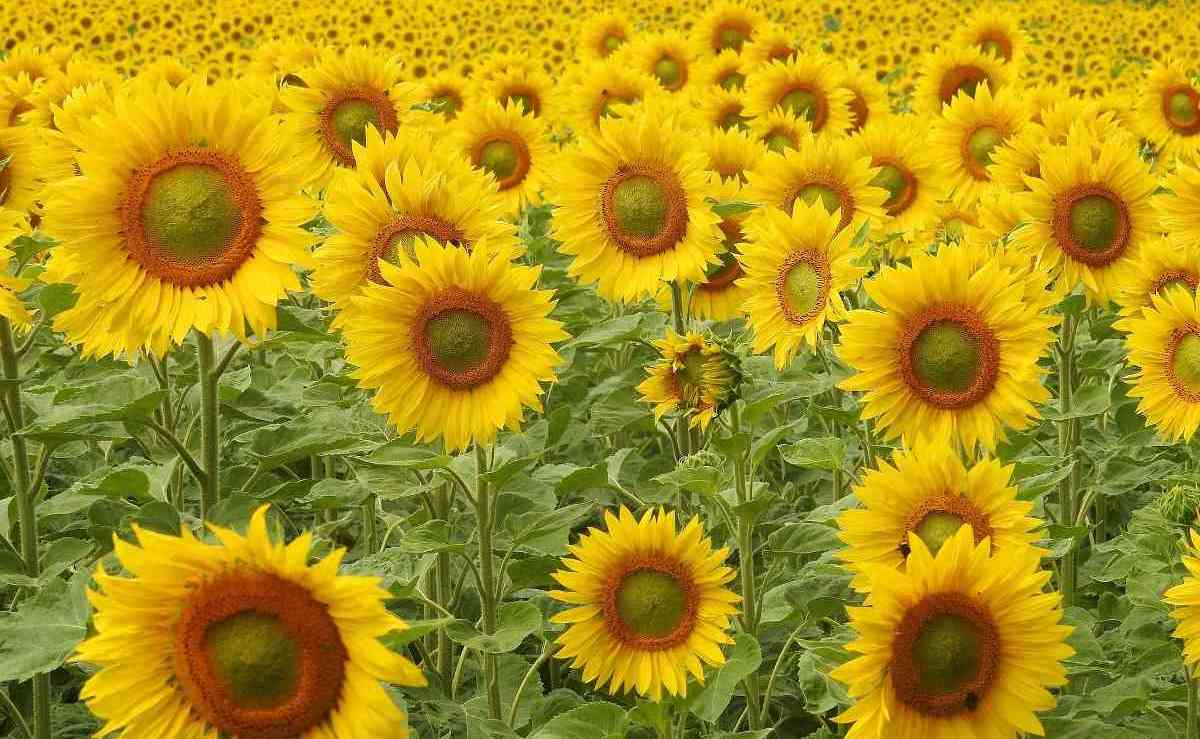
When to plant Sunflowers
Sunflowers are sun worshipers that grow best in spots that get 6 to 8 hours of direct sun per day. They have long tap roots that need to go several feet into the ground, so plants prefer loose, well-drained, somewhat alkaline soil with a pH level of 6.0 to 7.5. Sunflowers are heavy feeders, so they’ll be healthiest and generate the most blooms in nutrient-rich soil that has had compost or organic matter mixed into it.
Seedbed preparation for Sunflower cultivation
Many different tillage systems could be used effectively for Sunflower production. Conventional systems of seedbed preparation contain moldboard plowing or chisel plowing to invert residue and secondary field operations. Conventional systems have been shown to increase the availability and develop the distribution of potassium and nitrogen and to increase the seed zone temperatures. Though, the risk of erosion and expense of the several tillage operations has led to greater interest in minimum or ridge tillage systems.
Both seed germination percentage and lodging have been shown to increase in ridge-till systems. And several tillage systems have been used with some success in specific environments. Major considerations are given below;
- Firm placement of seed near moist soil,
- Absence of green vegetation during emergence,
- Maintaining an option to cultivate and
- Reduce the risk of soil erosion.
Sowing Sunflower seeds
- At the end of March/early April sow Sunflower seeds into 9cm pots. Then, use an equal ratio of loam, perlite, and sand.
- Stand pots in a warm propagator in the greenhouse they’ll take about 7 to 10 days to germinate.
- Put young plants outside during the day to allow the wind to thicken the plant stems, but return them to the greenhouse overnight. Do this for around 2 weeks.
- And plant out in April, in well-drained soil in a sunny aspect. Large varieties must be planted 15in (38cm) apart, dwarf ones 9-10in (22-25cm).
- Feed the plant with all-purpose fertilizer twice, once in mid-June and again in August.
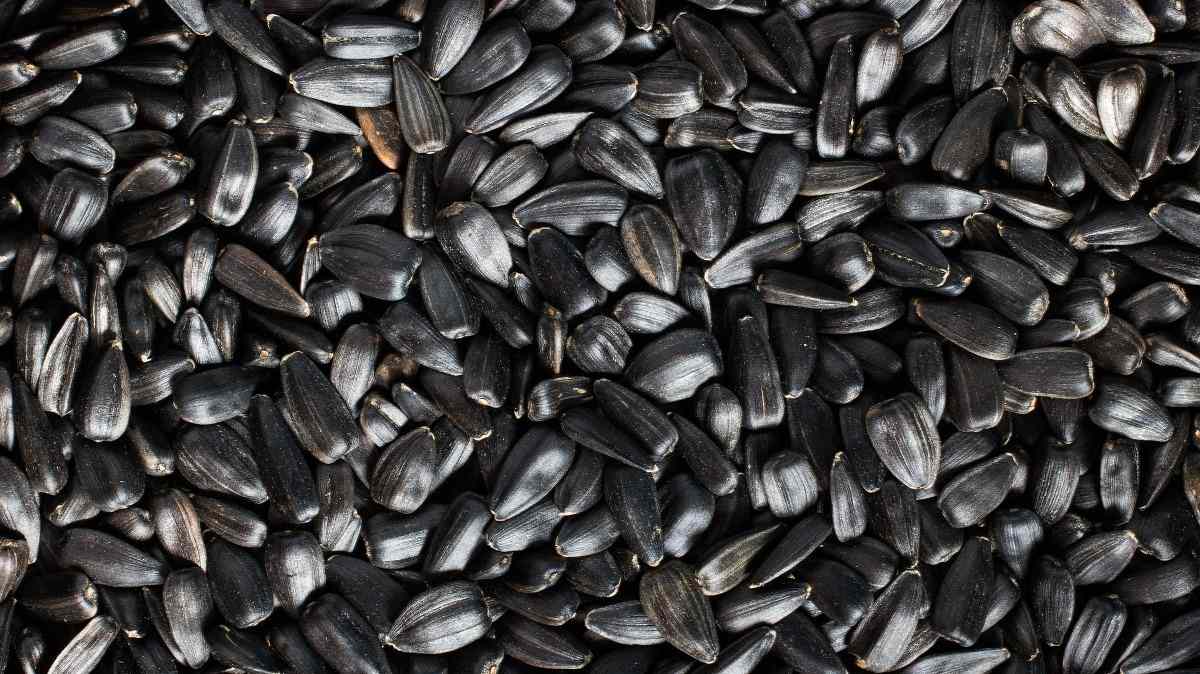
If you are thinking of sowing Sunflower seeds directly in the soil you will want to do this in mid-April. Make sure you put the seeds carefully in the ground and cover the seed with soil. Make sure you water the newly planted Sunflower seeds.
You should not miss the Basic Steps of Organic Farming.
The spacing of Sunflower seeds or plant to plant distance of sunflower
Space Sunflower seeds about 6 inches apart in a shallow trench between 1 and 2 inches deep. In sandy soil, 2 inches deep is better. Cover and keep watered until Sunflower seeds sprout in 7 to 10 days. Then, place the Sunflower seeds at a depth of 3 cm along the furrows in which the fertilizer mixture is placed and cover with soil. Put 2 seeds per hole.
A seed rate of Sunflower
The seed rate is the number of seeds planted per hectare (ha) to ensure a normal density of sprouts and a maximum crop yield. The seed rate is 8 to 10kg of well-filled seeds per hectare.
Seed treatment of Sunflower
Soaking seeds in 2% ZnSO4 for 12 hrs and shade drying is recommended for rain-fed sowing.
Treat the Sunflower seed with Trichoderma @4g/kg. This can be done just before sowing. It is compatible with biofertilizers. Then, such seeds should not be treated with fungicides.
Treat the Sunflower seeds with Carbendazim or Thiram at 2 g/kg of seed. Then, treat the seeds 24 hours before sowing.
Seeds dried to 8 to 9% moisture content, treated with Thiram @ 2g/kg, and packed in poly-lined cloth bag can store up to 9 months with 70% germination.
Requirements for Sunflower seed germination
Sunflower seeds planted either indoors or outdoors require a minimum soil temperature of 7 to 10°C to stimulate germination. Seeds can germinate in a soil temperature lower than 7°C, but the germination rate significantly drops.
Moisture
Sunflower seeds are planted a one-half inch deep and Sunflowers are an oil-rich seed, they require slightly more water for germination than many other seeds. This requires watering the ground thoroughly outdoors after planting and not allowing the soil to dry out completely until seed germination occurs. Indoors, the soilless media is completely saturated and also allowed to drain before 2 or 3 seeds are planted in each pot. Then, covering the pots with clear plastic wrap slows evaporation.
Temperature
Sunflowers germinate best at a soil temperature of 21 to 29°C. Outdoor planting time is several weeks after the last spring frost when the soil has warmed thoroughly. Indoors, a heating mat under the pots can raise the soil temperature to at least 21°C. The Sunflower seeds will sprout in 10 to 14 days outdoors. Indoors, where the growing environment can be more closely controlled, germination often takes place in 6 to 10 days.
Light Requirements
You can also check the Management of Plant Bacterial Diseases and Control.
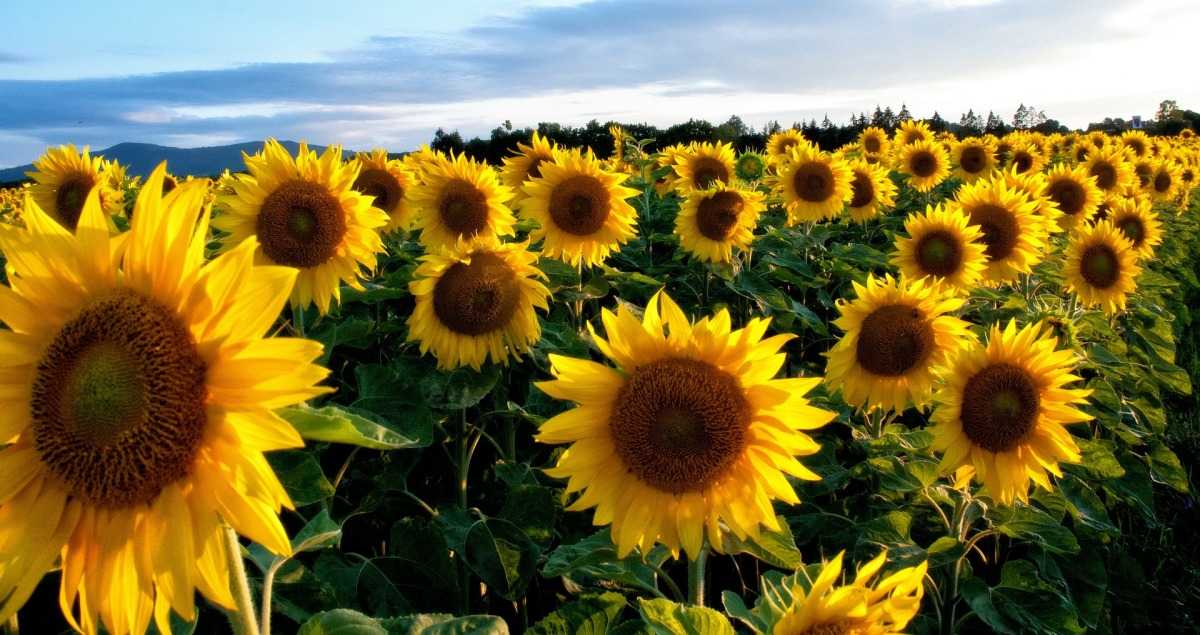
Sunflower seeds do not need light for germination. The plants grown indoors in pots, the plastic wrap is removed at the first sign of germination and the uncovered pots are located in bright, indirect light. Outdoors, thinning small varieties to 6 inches apart and large varieties to about 3 feet apart allows ample light and airflow around Sunflower seedlings.
Sunflower seed germination phase
Once you plant Sunflower seeds, the germination phase of the flower’s life cycle will begin. This phase takes up to 8 days. During germination, plant roots will develop from the seed and a shoot will push through the surface of the soil. The shoot is looking for sunlight because all plants require sunlight to grow. Germination occurs from mid-April to late-May, depending on when you plant your seeds.
How to plant Sunflower seeds
Plant the Seeds
Different Sunflowers need different planting depths and spacing. How to grow Sunflowers from seed and how deep to plant Sunflower seeds depends on specific Sunflower cultivar. In general, plant seeds at least 1/2 inch deep. Space seeds 6 inches apart. If planting in rows, you’ll want about 2 to 3 feet between each row. Plants must be thinned out in a few weeks to the proper spacing. If soil temperatures are just right, Sunflower seedlings will sprout up in about 10 to 14 days.
Growing Sunflower seeds requires some space. To start Sunflowers indoors, plant 3 seeds per each 3- to 4-inch peat pot. A soilless planting media will give you the best drainage system. Indoor germination happens in 6 to 10 days. You can enjoy continuous blooms through summer by planting Sunflower seeds every couple of weeks. With consecutive plantings, you will have beautiful Sunflower blooms right up until the first frost of fall.
Thin the Seedlings
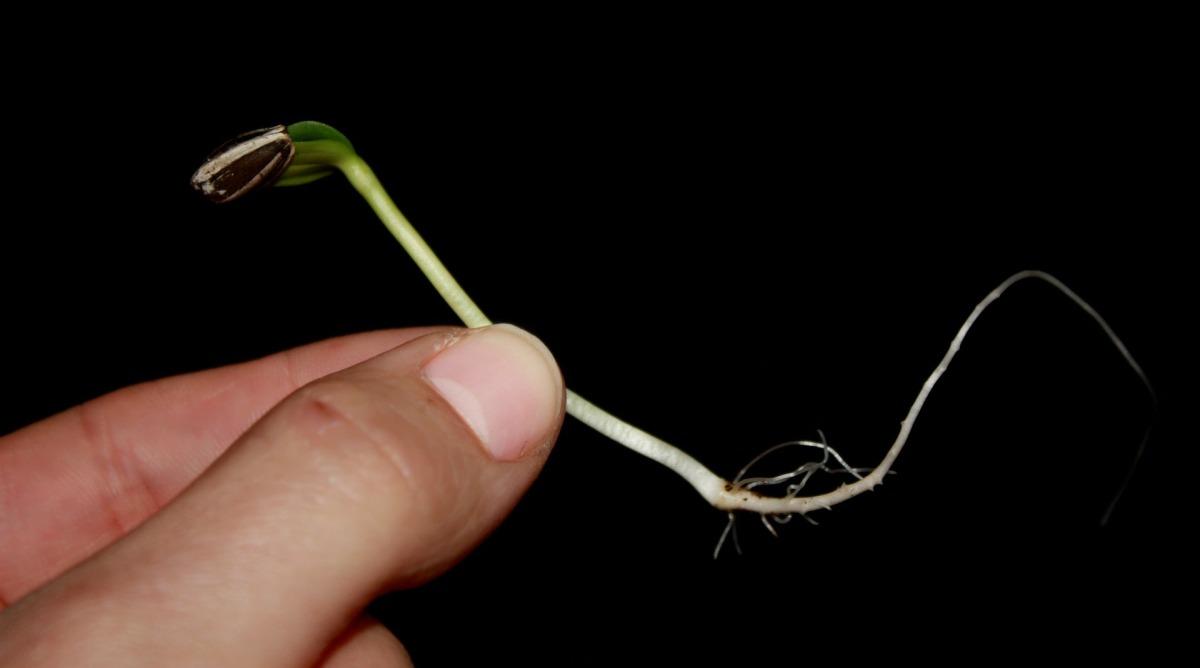
Once the Sunflower seedlings have their first set of true leaves, thin the seedlings to the recommended row spacing for variety. Small Sunflowers can require only 6 inches between each plant, while large varieties might need up to 3 feet. Closer spacing is possible for garden aesthetics, but crowded plants will produce smaller Sunflower flowers. Indoor Sunflower seedlings must be reduced to one seedling per cup. Simply select the strongest Sunflower and pinch back the others.
Germinate Sunflowers with paper towels
- First, fold a paper towel in half. Fold it into half again to make a square and fill a plastic spray bottle with water and mist the paper towel to dampen it. Don’t make it too soggy.
- Place the folded paper towel in a clear plastic sealable food storage bag. Flatten the paper towel. Space 3 or 4 Sunflower seeds evenly apart across the center of the paper towel. Water the seeds with an eyedropper and add two drops of water to the towel about 1/4 inches away from each seed.
- Zip the plastic bag closed, leaving about a 1-inch opening in the middle. This will give the Sunflower seeds with the oxygen they need to germinate. Then, press as much excess air out of the bag as you can. Hold it up to a window with the Sunflower seeds facing the glass. The moist paper towel will adhere to the inside of the plastic bag, and holding the seeds in place. This will prevent them from falling to the bottom of the bag and tape the sides of the bag to the window. Place a small piece of tape on each side of the bag near the top of it. Then, your Sunflower seeds will germinate in several days.
- Check on the progress Sunflower seeds are making each day. Carefully get the bag down from the window and lay it flat on the counter. Feel the paper towel to make sure it’s still moist and if it feels dry poke the nozzle of the spray bottle into the opening at the top of the bag and dampens it with a little spritz of water. Re-tape the bag to the window.
- Plant Sunflower seedling in its small pot of potting soil about a week after they germinate. Cover the roots with soil, leaving as much of the stem as possible above the soil level. Set the pots on a windowsill in a warm room and keep the soil evenly moist but not wet or soggy. Don’t let it dry out.
- Then, transplant the Sunflower to a sunny spot in the garden. Keep the soil evenly moist until you see new growth, which means that the Sunflower plant has become well established. Water the plant once weekly or when the soil feels dry to the touch thereafter.
Harvesting Sunflower seeds
To harvest the seeds of Sunflower, wait until your Sunflower droops and turns brown. Then, cut the stem leaving 4 inches from the head of the Sunflower. You should store the Sunflower head upside down in a dry and breathable bag.
Your seeds must be ready to harvest within 110 to 125 days after you planted the flower. This means that if you planted seeds in May, your Sunflower will die in early or mid-August and you should have ready-to-harvest seeds in late-August or September. Because Sunflowers are annual plants, they should be replanted year after year.
Commonly asked questions about Sunflower seed germination
You may also check the Food Processing Subsidy and Loan in India.
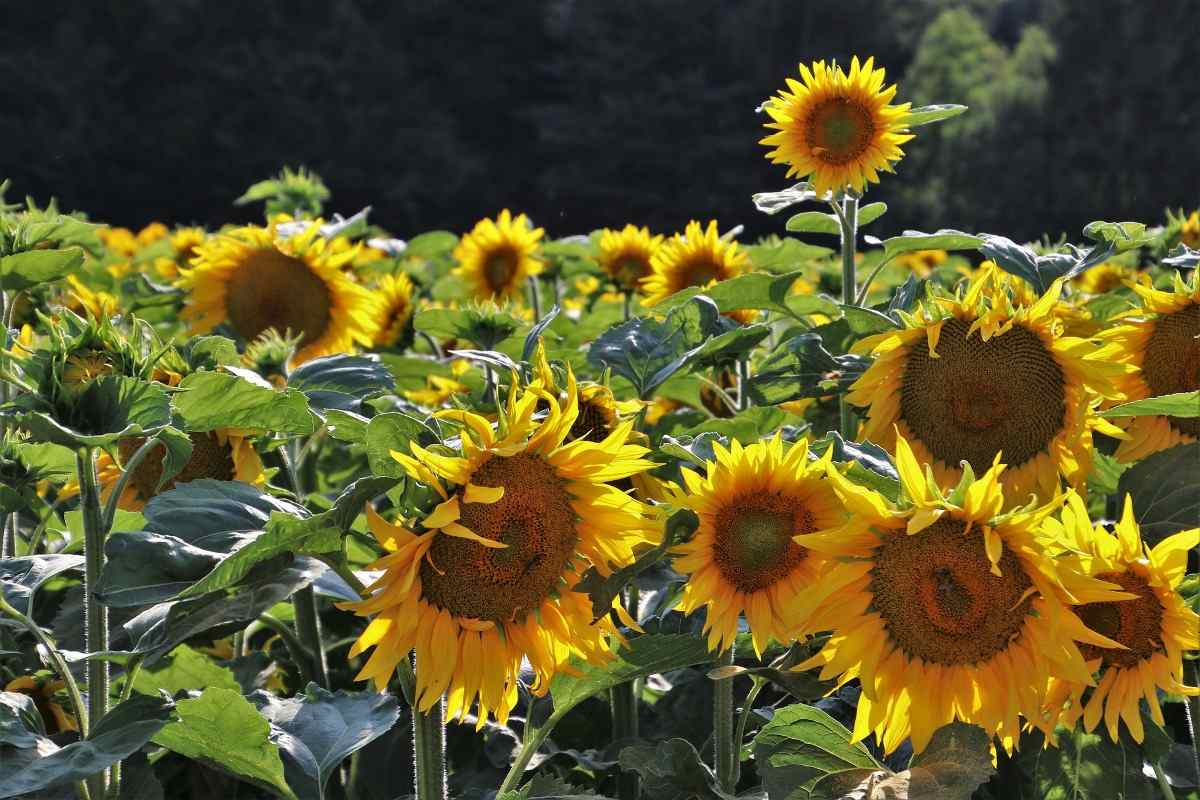
How fast do Sunflowers grow?
Sunflower plants grow quickly. Many can achieve up to 12 feet of growth in 3 months. With the proper growing conditions, Sunflowers must reach maturity in 70 to 100 days after planting.
How long do Sunflowers live?
Most Sunflowers are annuals and they germinate in late spring, bloom during the summer, and die back at the first frost of fall. When considering how to grow a Sunflower that lasts all summer, the best plan is to plant Sunflowers every few weeks to extend bloom time.
When should transplant Sunflower seedlings?
When Sunflower seedlings reach 4 to 5 inches in height, you must transplant them if the weather outside is favorable. Like other flowers, Sunflowers must not be transplanted outdoors until the chance of an overnight frost has passed for the season.
How do you know when Sunflower seeds are ready?
Harvest Sunflowers when their petals become dry and also begin to fall. The green base of the head will turn yellow and finally brown. Seeds will look plump and the seed coats will be fully black or black and white stripes depending on the plant variety.
How long do Sunflowers last?
With proper care, Sunflowers should last from 6 to 12 days. To maximize the vase life, look for Sunflowers that are just starting to fully open.
How often should I water Sunflower seeds?
Water your Sunflower several times a week. Expect to water Sunflowers more often than you do other plants. Check the soil every day or two it must be constantly moist. Generally, give Sunflowers about 2 gallons of water a week.
Why are my Sunflower seeds not growing?
Too dry and your seeds won’t germinate. Too wet and they’re liable to rot. Ensure that seeds are kept evenly moist by thoroughly wetting and draining the compost before you begin.
Can Sunflowers grow close together?
Generally, Sunflower seeds are sown about 1-inch deep, spacing the seeds 6 to 36-inches apart, depending on the variety. You can sow several seeds close together and remove the weaker ones after a few weeks. This is known as ‘thinning out’.
Conclusion of seed Germination of Sunflower
A good percentage of sunflower seed germination leads to a high yield of the crop. One must be aware of techniques for the sunflower seed germination process. You may also like Organic Hydroponics Gardening, Advantages, Problems.
Sunflower disk with seeds was frozen in the field, are seeds able to germinate next year?